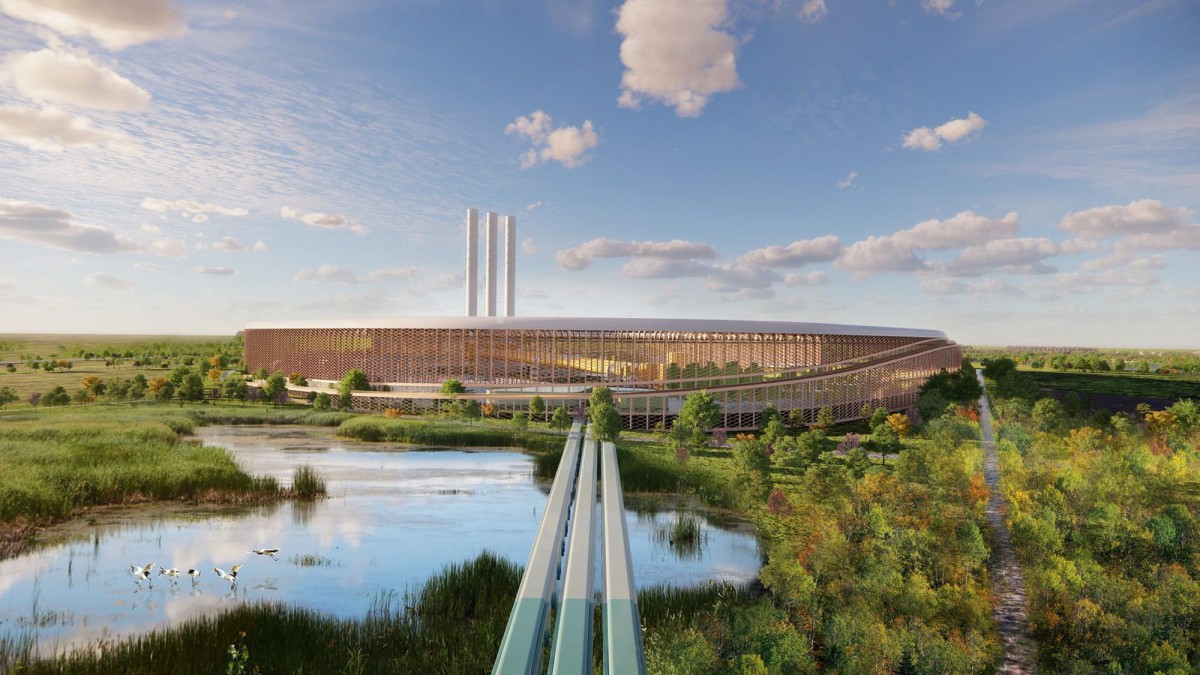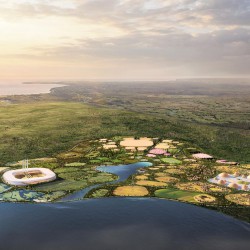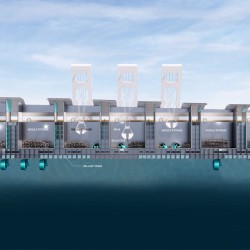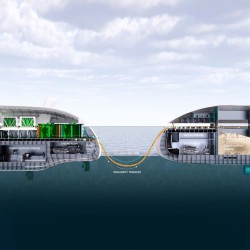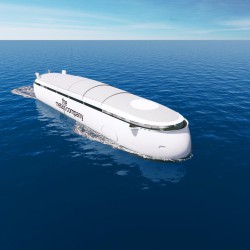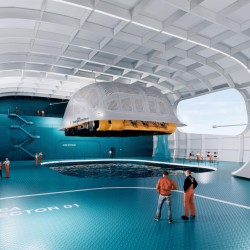Designs unveiled for seafloor mineral collector robots, carbon-neutral vessels and waste-free metals processing and recycling plants will enable a circular supply chain for battery metals.
BIG has designed The Metals Company’s circular zero-solid-waste metallurgical plant to contain pyrometallurgical processing and hydrometallurgical refining steps, stockpiles, and product storage alongside offices, visitor-centric experiences, and an innovation center to tie products into the EV supply chain. The company envisions multiple facilities spread across three continents and a number of brownfield sites are currently under consideration. These plants would in time be retooled to recycle battery cathodes at end-of-life, closing the loop on the battery metals supply chain.
BIG-Bjarke Ingels Group has collaborated also with The Metals Company, a developer of lower-impact battery metals from seafloor polymetallic nodules, to remake conventional metal production for the 21st century as society embarks on the transition to a net-zero-carbon future.
The Metals Company’s challenge with BIG was to bring innovative, whole-systems design to the industrial components needed to supply the world with critical battery metals from polymetallic nodules—fist-sized rocks containing battery-grade nickel, cobalt, copper and manganese—while reimagining the nexus of industry and community. BIG delivered an integrated suite of assets that work together to lift nodules off the seafloor and up to a purpose-built production vessel, transfer them to a hydrodynamic shuttle carrier, and onward to a metallurgical plant designed to transform an urban port site into a battery materials innovation and community hub, set within a regenerative coastal landscape.
The Metals Company’s first-generation collector vehicle has been engineered and is currently being built by Allseas in the Netherlands to be deployed for testing early next year.
Nodules are transported through a flexible hose at the top of the collector vehicle to a rigid riser pipe where they are lifted on compressed air bubbles ~4 km up to the surface production vessel, a 216-meter-long ship that runs on carbon-neutral electrofuels, with a sunken deck that is covered with photovoltaic solar panels. The streamlined design of the production vessel is driven by functionality. Equipment for nodule collection is strategically packed in the hull to minimize the size of the vessel and maximize operational efficiency. At scale, each production vessel would operate multiple collectors with additional maintenance capacity provided by a support vessel with a ‘moon pool’ for deploying and retrieving collector vehicles.
While The Metals Company’s first production vessel is a deep-water drillship repurposed by Allseas to enable pilot nodule collection, BIG’s next generation vessel design is central to The Metals Company’s plans to scale to a fleet of 10 production vessels, enabling the provision of over 40 million tons of battery metals by 2050, enough to produce 280 million electric vehicles (EVs)—a quarter of the global passenger car fleet.
_

